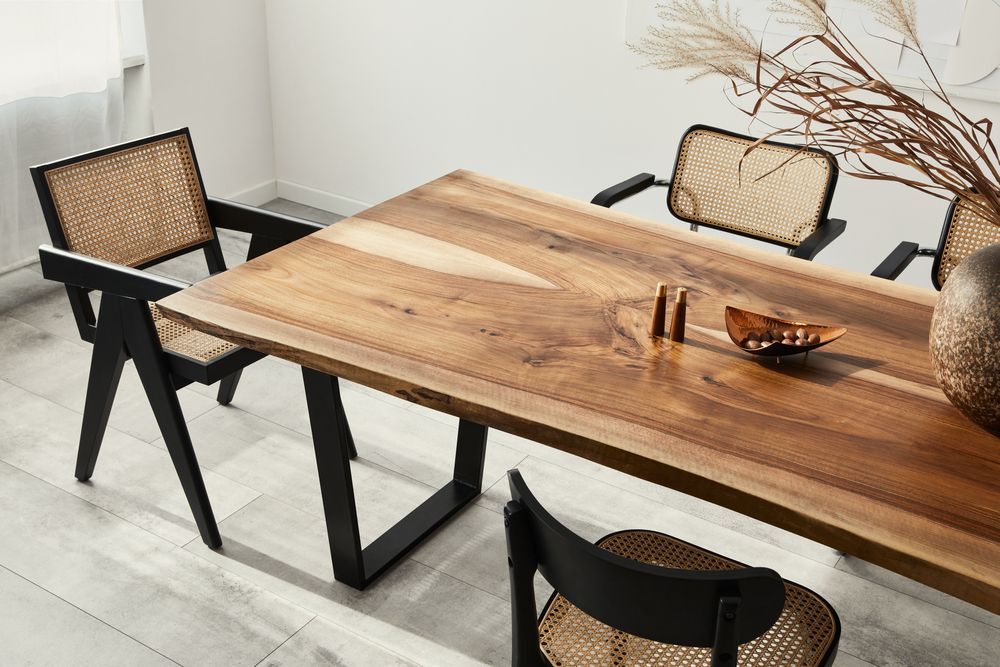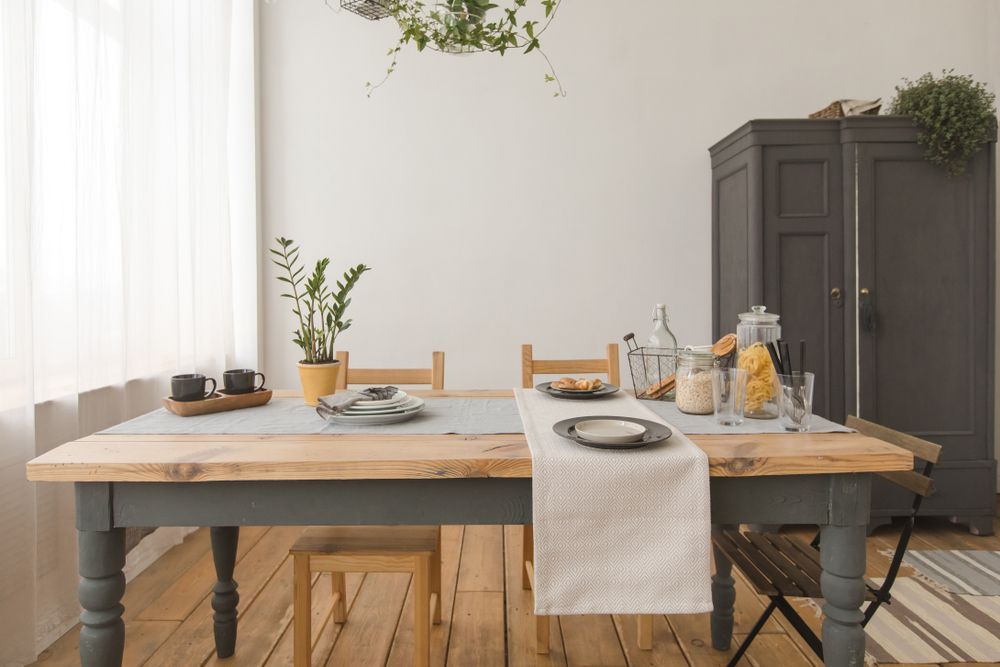Real Wood Vs Veneer Vs Laminate in Furniture
Share this article:
Written by: Evolution Furniture
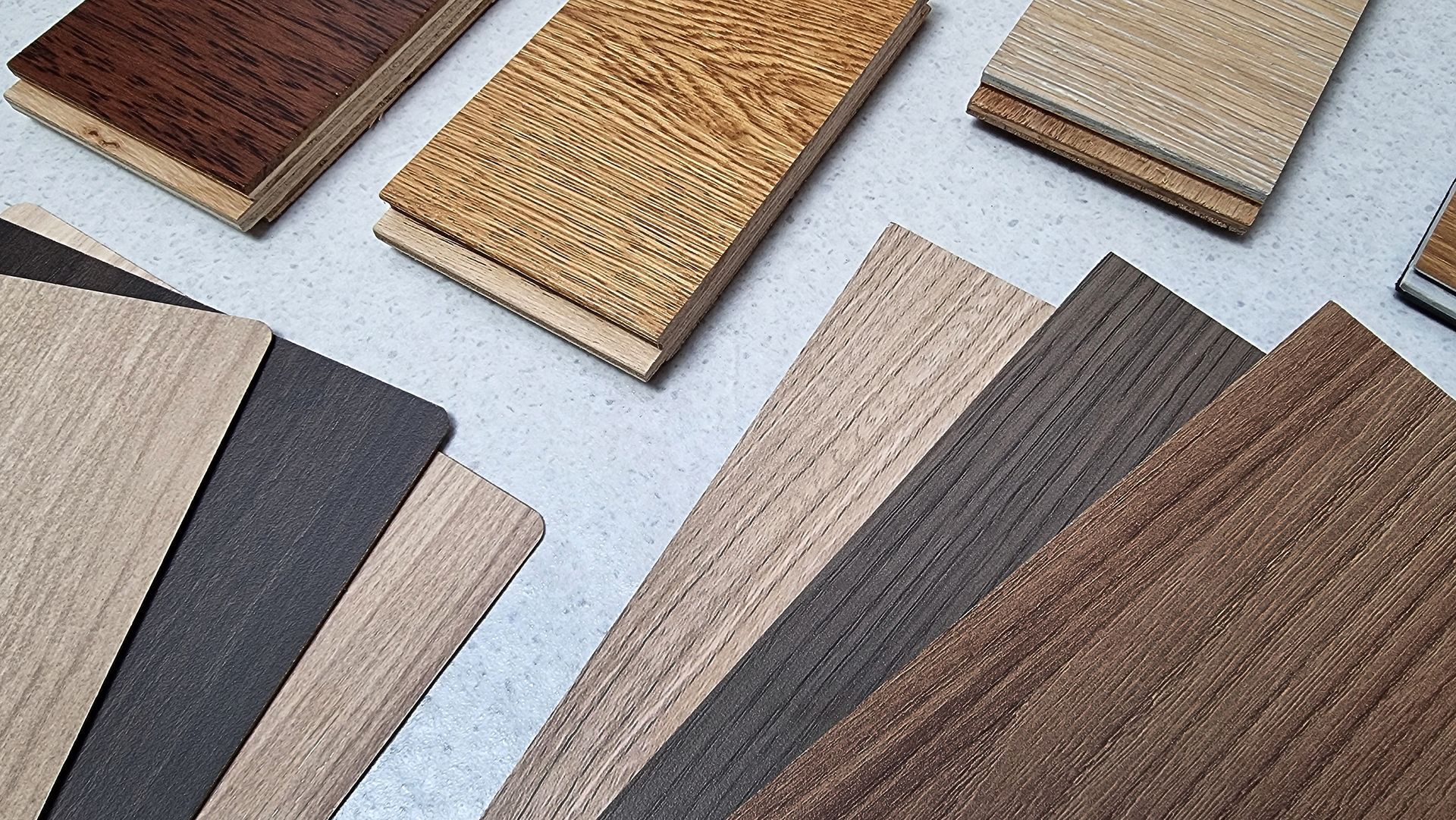
Wood products aren't always made from solid wood. In fact, wood veneer and laminate play a significant role in a variety of furnishings and finishes found around the house and in businesses. Each one of these materials is maintained differently, and the appearance varies as well.
Whether you're ordering custom-made furniture, undergoing furniture restoration, or completing furniture repair, it's important to know the differences between real wood, veneer, and laminate.
In this article, we'll get into each type and talk about how these options can be used in furniture. If you're ordering custom furniture from Evolution Furniture, having this information can help you as you move forward.
What Is Wood Veneer?
Wood veneer is a layer of very thin solid wood that is attached to a material like medium-density fiberboard (MDF) or plywood. Wood veneer is less expensive than solid wood and also usually weighs less as well. Wood veneer is the preferred product when you need something that looks like real wood, but you're on a budget.
What Is Laminate?
Laminate is a product that is an engineered material constructed in layers. Usually, laminate includes a layer of plastic and a layer of a composite product, with a picture of wood under the layer of plastic. Laminate looks very much like wood but lacks some of the properties that give wood its natural warmth and beauty.
Laminate usually feels like plastic. In addition, because laminate is made from a photograph of wood, it may also include repeating patterns. Laminate may also lack the weight and heft of wood.
Laminate is very easy to maintain, scratch-resistant and can be washed with water, so in some cases, it's preferred to natural wood. It's often a material of choice in homes with small children.
What Is Real Wood?
Solid wood is exactly what it sounds like. If you cut into real wood, you won't see layers of wood mixed with other products: you'll just find more wood. Real wood has a lot of natural beauty that makes it very valuable, but it also needs regular maintenance.
Real wood can be scratched and gouged by rough treatment. It can also be damaged by prolonged exposure to water.
Wood can be refinished to take on a second life after it's been damaged, so it can last a very long time. Finally, wood is hygroscopic, which means that it absorbs moisture in the environment, and may swell and shrink as a result.
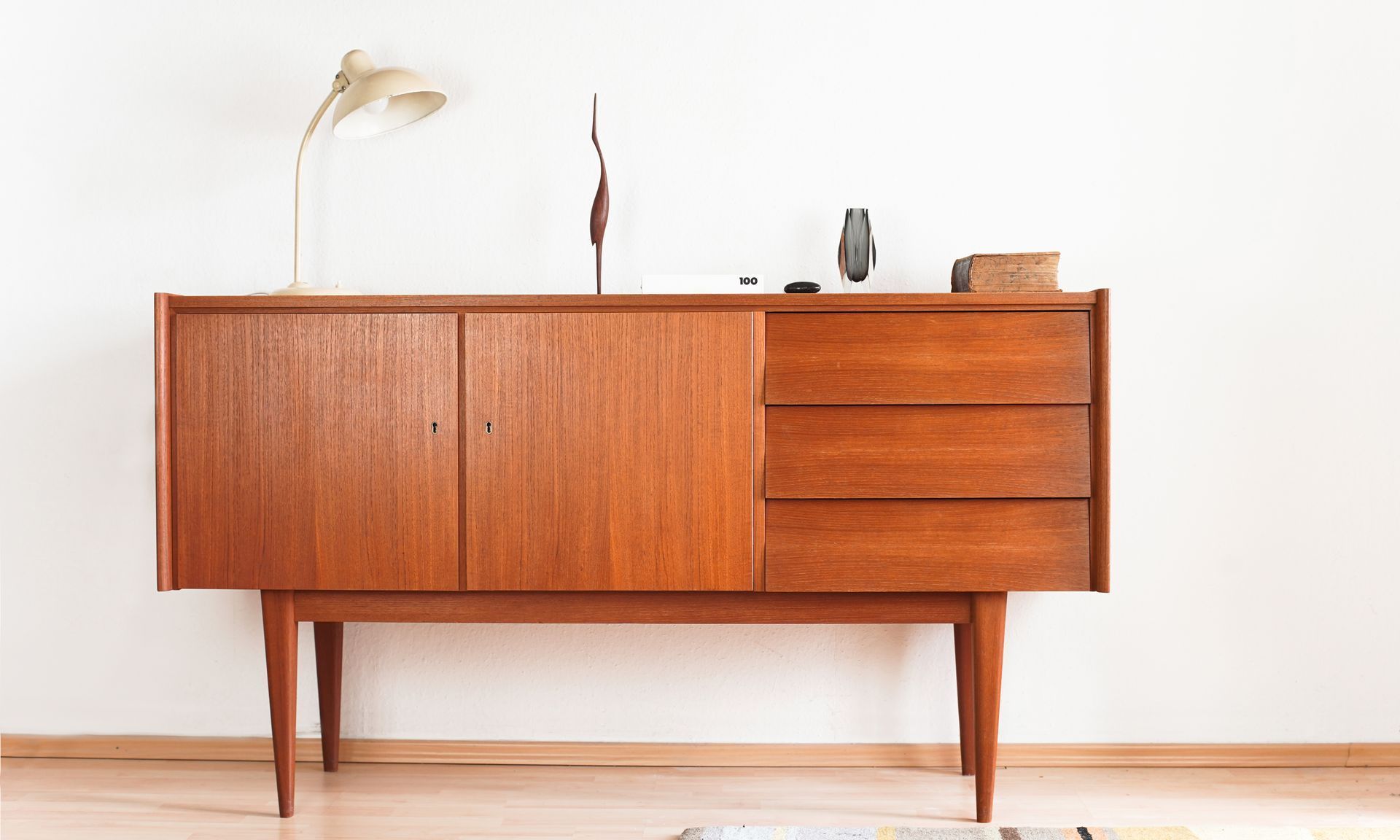
Key Differences Between Laminate, Veneer, and Solid Wood
Knowing the key differences between laminate, veneer, and solid wood is important, especially when you're trying to decide which product is best for your custom furniture. In this section, we'll list the pros and cons of each to help you make an informed decision.
Pros & Cons
Laminate
Laminate is an engineered product that is designed to look like wood but resist scratching without any need for refinishing.
Pros
- Highly scratch resistant
- Can be made waterproof
- Easy to clean with water
- Long-lasting and durable
Cons
- Doesn't look completely natural
- Feels more like plastic than like real wood
- Not as high-value as solid wood
- Can't be refinished
Wood Veneer
Wood veneer is a layered product that looks like real wood but isn't solid. Veneer is a real wood that's been glued to an engineered core.
Pros
- Beauty of solid wood
- Generally not as expensive as solid wood
Cons
- Can't be refinished
- Can be damaged by water
Solid Wood
Solid wood is a product that has been used in homes and businesses for centuries. Homeowners and business owners seek out wood for its natural beauty and its durability.
Pros
- Long-lasting and durable
- Made from higher quality materials and mannufacturing methods
- Timeless beauty
- Can be refinished when it becomes scratched
- Natural wood grain is visible, giving a unique appearance
Cons
- Can be damaged by water
- Should be cleaned with oil cleaners rather than water
- Needs to be refinished or resealed periodically
- Prone to warping or cracking when exposed to humidity or rapid temperature changes
Maintenance Tips for Each Type of Wood
It's important to maintain your furniture, whether it's made of solid wood, veneer, or laminate. Each type of material is maintained in different ways. Here's what to expect.
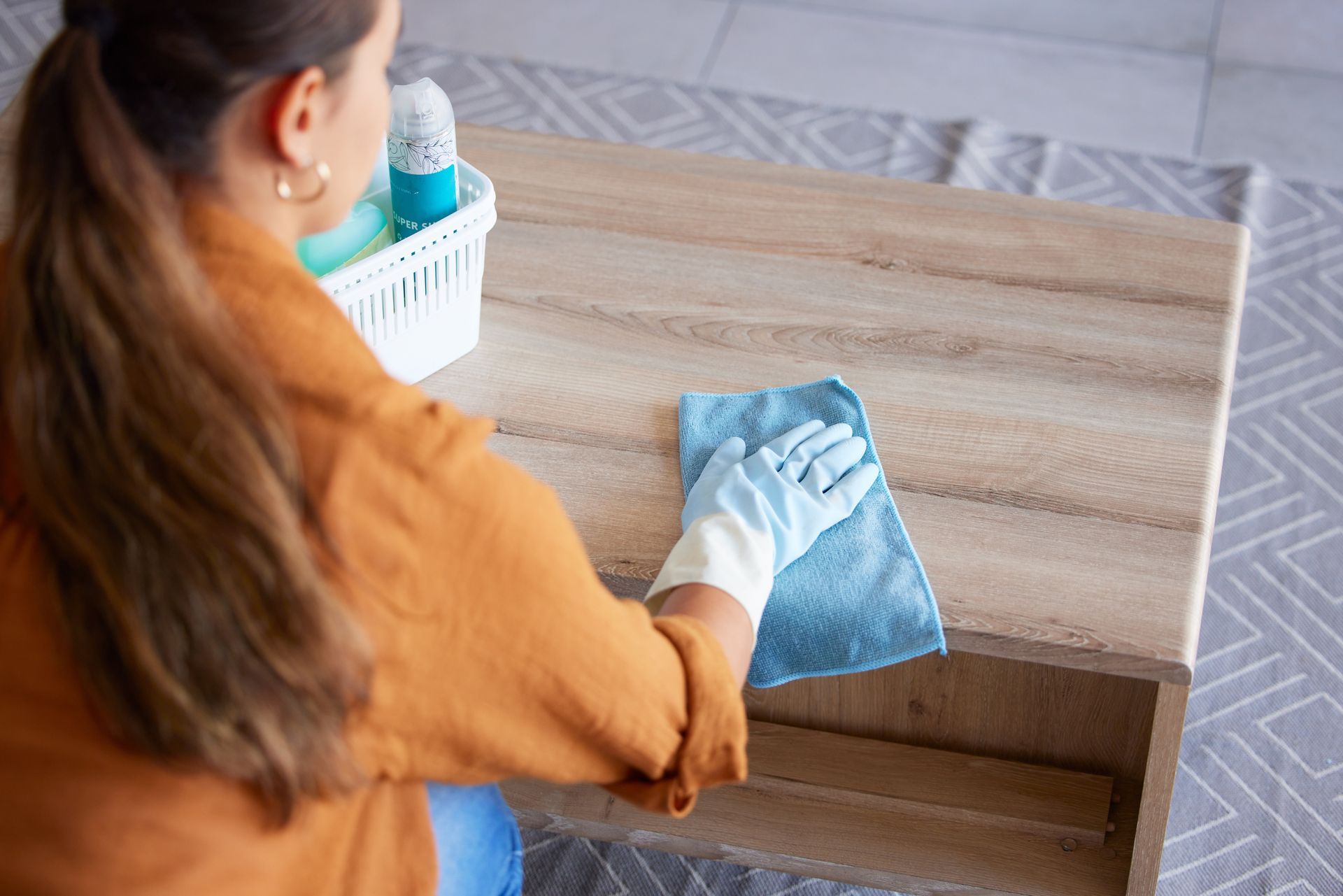
Solid Wood Maintenance
Maintain your solid wood by dusting it periodically. Condition it with an oil-based cleaner. Wood needs to be protected from water and scratches, so if your furniture piece is a table, use coasters and trivets to protect your wood from scratches. If your wood develops scratches and stains over time, you may need to refinish it.
Veneer Furniture Maintenance
Keep your veneer out of direct sunlight to keep it protected. Use a custom glass tabletop protector to keep your veneer looking new. Clean it with an oil-based wood cleaner.
Laminate Maintenance
Laminate can be cleaned with mild soapy water unless otherwise specified by the manufacturer. Clean the laminate periodically and dry the surface.
Choosing the Right Material for Your Furniture
Choosing the right material for your furniture is important. Knowing the level of maintenance that each material requires and how much time you can spend keeping your furniture looking its best is important. Keep in mind where the furniture will be placed and what other materials are in the room with it.
If you're purchasing a custom-made piece from Evolution Furniture, talk to our experts about your goals and needs. We'll help you choose the right material for your piece.
| Characteristic | Wood | Laminate | Veneer |
|---|---|---|---|
| Easy to Maintain | x | ||
| Can Be Refinished | x | ||
| Natural Wood Appearance | x | x | |
| Scratch Resistant | x |
Evolution Furniture Works With Each of These Materials
Evolution Furniture refurbishes and customizes furniture made of solid wood, laminate, and veneer. We also create furnishings in different styles for residential and commercial purposes.
Are you an interior designer? We work with interior designers to help them with their client projects. To learn more about different types of wood finishes for your furniture, download our comprehensive guide to wood finishes. To get started on your custom furniture project, contact Evolution Furniture today.

